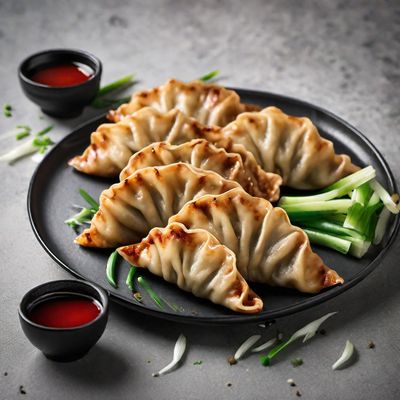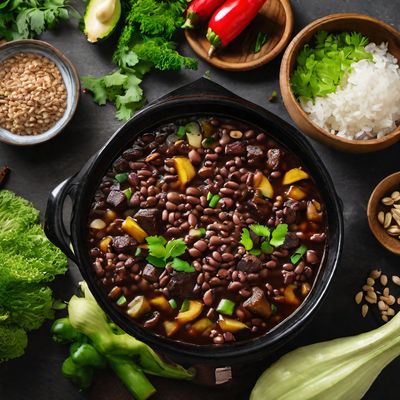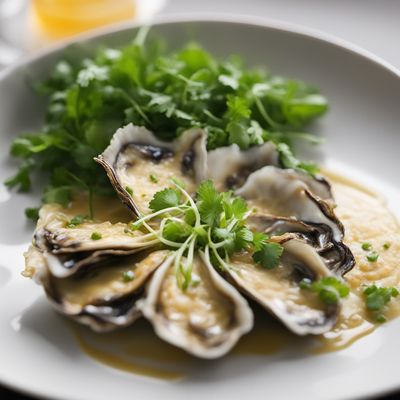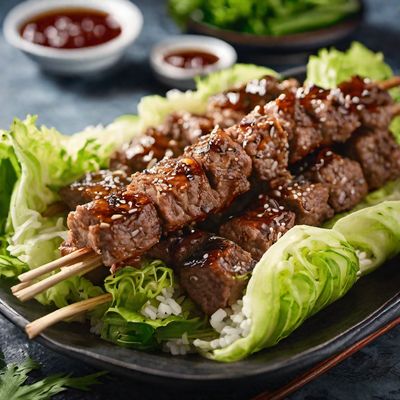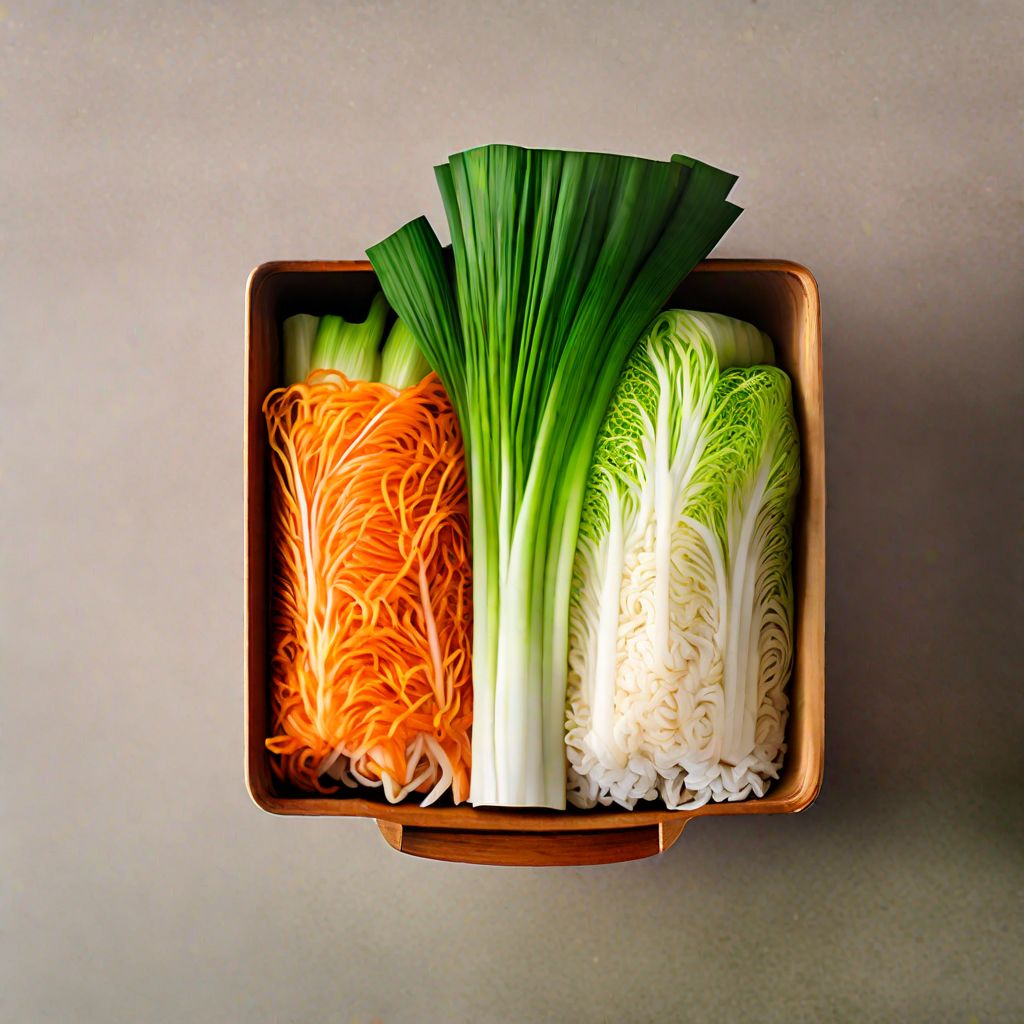
Recipe
Taiwanese-style Kimchi
Taiwanese Spicy Fermented Cabbage Delight
4.8 out of 5
In Taiwanese cuisine, bold flavors and fermented ingredients are highly valued. This Taiwanese-style Kimchi recipe combines the traditional Korean dish with Taiwanese influences, resulting in a tangy, spicy, and crunchy delight. The vibrant flavors of this dish make it a perfect accompaniment to any Taiwanese meal.
Metadata
Preparation time
20 minutes
Cooking time
0 minutes (fermentation time: 5-7 days)
Total time
5-7 days (including fermentation)
Yields
4 servings
Preparation difficulty
Easy
Suitable for
Vegetarian, Vegan, Gluten-free, Dairy-free, Low calorie
Allergens
N/A
Not suitable for
Nut-free, Soy-free, Paleo, Keto, Low sodium
Ingredients
While the original Korean Kimchi is known for its intense spiciness and pungency, the Taiwanese-style Kimchi is milder in heat and incorporates additional ingredients to enhance the flavors. Taiwanese Kimchi often includes local spices and herbs, giving it a unique twist compared to its Korean counterpart. We alse have the original recipe for Kimchi, so you can check it out.
-
1 medium Napa cabbage, cut into bite-sized pieces 1 medium Napa cabbage, cut into bite-sized pieces
-
2 tablespoons sea salt 2 tablespoons sea salt
-
1 tablespoon sugar 1 tablespoon sugar
-
2 tablespoons Taiwanese chili bean paste 2 tablespoons Taiwanese chili bean paste
-
1 tablespoon ginger, minced 1 tablespoon ginger, minced
-
3 cloves garlic, minced 3 cloves garlic, minced
-
2 green onions, chopped 2 green onions, chopped
-
1 tablespoon rice vinegar 1 tablespoon rice vinegar
-
1 tablespoon soy sauce 1 tablespoon soy sauce
-
1 teaspoon sesame oil 1 teaspoon sesame oil
-
1 teaspoon sugar 1 teaspoon sugar
-
1/2 teaspoon white pepper 1/2 teaspoon white pepper
-
1/2 teaspoon Taiwanese five-spice powder 1/2 teaspoon Taiwanese five-spice powder
-
1/4 cup water 1/4 cup water
Nutrition
- Calories (kcal / KJ): 45 kcal / 188 KJ
- Fat (total, saturated): 0.5g, 0g
- Carbohydrates (total, sugars): 9g, 5g
- Protein: 2g
- Fiber: 3g
- Salt: 1.5g
Preparation
-
1.Place the Napa cabbage in a large bowl and sprinkle with sea salt. Let it sit for 1 hour to draw out excess moisture.
-
2.Rinse the cabbage thoroughly under cold water and drain well.
-
3.In a separate bowl, combine sugar, chili bean paste, ginger, garlic, green onions, rice vinegar, soy sauce, sesame oil, sugar, white pepper, five-spice powder, and water. Mix well to create the kimchi paste.
-
4.Add the cabbage to the kimchi paste and toss until well coated.
-
5.Transfer the kimchi to a clean, airtight jar or container, pressing it down firmly to remove any air bubbles.
-
6.Leave the jar at room temperature for 2-3 days to allow fermentation. Then, refrigerate for an additional 3-4 days to develop the flavors.
-
7.Serve chilled and enjoy!
Treat your ingredients with care...
- Napa cabbage — Make sure to thoroughly rinse the cabbage after salting to remove excess saltiness.
- Taiwanese chili bean paste — Adjust the amount according to your preferred level of spiciness.
- Taiwanese five-spice powder — If you can't find Taiwanese five-spice powder, you can substitute it with Chinese five-spice powder.
Tips & Tricks
- For a more intense flavor, allow the kimchi to ferment for a longer period.
- Serve the kimchi as a side dish with rice, noodles, or in sandwiches for added flavor.
- Adjust the amount of chili bean paste and white pepper according to your spice tolerance.
- Use gloves when mixing the kimchi paste to avoid staining your hands with chili bean paste.
- Store the kimchi in the refrigerator after fermentation to slow down the fermentation process.
Serving advice
Serve the Taiwanese-style Kimchi chilled as a side dish alongside your favorite Taiwanese dishes. It pairs well with rice, noodles, or even as a topping for savory pancakes.
Presentation advice
Garnish the kimchi with a sprinkle of sesame seeds and a few slices of green onion to add a pop of color and freshness. Serve it in a small dish or bowl to showcase its vibrant red color.
More recipes...
For Kimchi » Browse all
For Korean cuisine » Browse all
More Korean cuisine dishes » Browse all

Bondipan
Meat and vegetable sandwich
Bondipan is a traditional Filipino bread that is made with coconut milk and sugar. It is a sweet and fluffy bread that is perfect for breakfast or...
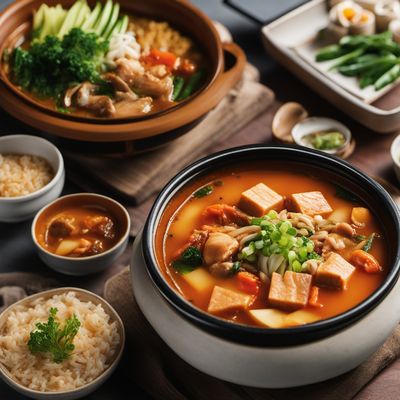
Sundubu jjigae
Sundubu jjigae is a Korean stew made with soft tofu, vegetables, and seafood or meat. It is typically served with rice and side dishes.

Jangjorim
Soy-braised beef
Jangjorim is a traditional Korean dish that is made with beef and soy sauce. It is a popular side dish that is often served with rice or used as a...
More Taiwanese cuisine dishes » Browse all

Suān cài
Sour Cabbage Stew
Suān cài is a traditional Chinese dish made with pickled mustard greens.

Lu rou fan
Braised Pork Rice Bowl
Lu rou fan is a traditional Taiwanese dish that consists of braised pork served over rice.

Hî-ôan
Fish Noodle Soup
Hî-ôan is a Vietnamese dish made from steamed fish and a spicy ginger sauce.




